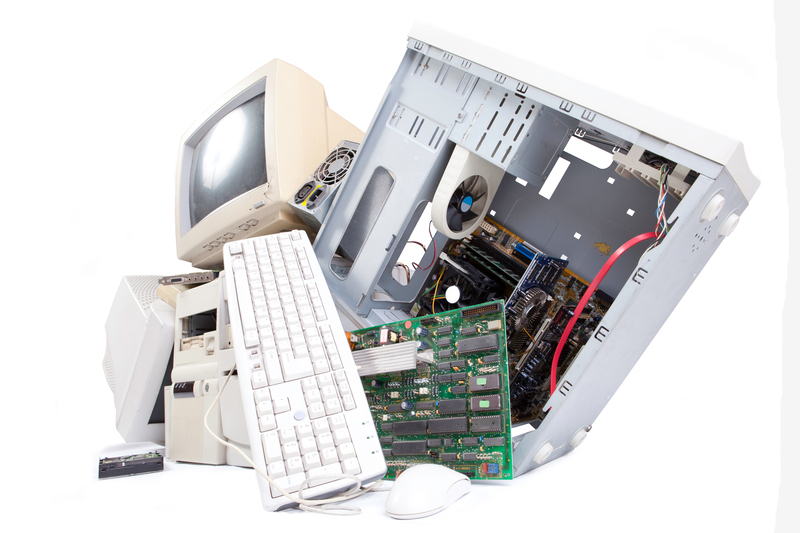Transforming School Environments with Strategic Recycling Plans
Schools are not just centers of education; they are vibrant communities shaping the next generation. Among the various initiatives schools can undertake to foster responsible citizenship, implementing strategic recycling plans stands out as both imperative and transformative. Through sustainable waste management, schools can significantly reduce their environmental footprint, teach environmental stewardship, and promote long-term behavioral change. In this comprehensive article, we delve into transforming school environments with strategic recycling plans, highlighting essential steps, benefits, and actionable best practices.
Why Focus on Recycling in Schools?
Why is recycling such a crucial component in educational institutions? Children spend a significant portion of their formative years in schools. Thus, these environments are perfect settings for inculcating environmentally conscious habits. A well-designed school recycling strategy doesn't just manage waste effectively--it brings about a cultural shift towards sustainability.
- Volume of Waste Generated: Schools generate copious amounts of paper, plastic, food waste, and electronics.
- Teachable Moments: Recycling initiatives create real-life learning opportunities for students.
- Community Impact: Sustainable schools inspire families and local communities to adopt greener practices.

Key Elements in Crafting Effective School Recycling Programs
Developing a robust strategic recycling plan for schools requires thoughtful planning, stakeholder engagement, and continuous improvement. Let's explore the essential components of a successful program.
1. Assess the School's Waste Stream
Begin by conducting a comprehensive waste audit. Identifying the types and quantities of waste produced enables targeted interventions--such as increasing Paper, Plastic, Metal, and E-waste collection points.
- Examine classroom bins, cafeterias, offices, and outdoor spaces
- Quantify recyclable vs. non-recyclable materials
- Highlight problematic waste categories (e.g., single-use plastics, food waste)
2. Set Clear, Measurable Goals
Establishing specific recycling targets is crucial. Examples might include diverting 50% of school waste from landfills within one year, or reducing single-use plastic in cafeterias by 80%.
Tip: Involve students and staff in setting goals to foster ownership and motivation.
3. Engage the Entire School Community
A successful school environment recycling program engages administrators, teachers, custodial staff, students, and even families. Educational campaigns, recycling competitions, and incentive programs can spur participation.
- Appoint student recycling ambassadors
- Host awareness sessions for staff and students
- Involve parent-teacher associations in supporting initiatives
4. Strategically Place Recycling Stations
Placement is key. Clearly labeled, color-coded bins in high-traffic areas maximize recycling rates. For example:
- Paper bins near classrooms, libraries, and offices
- Plastics and metals bins in cafeterias, sports facilities, and vending machine areas
- Compost bins for food waste in dining areas and kitchens
5. Build Partnerships with Local Recyclers
Collaboration with municipal recycling services or private waste management companies is crucial for sustained success. Regular pickups and feedback on contamination help improve recycling rates.
Bonus: Some recycling firms offer educational sessions for schools or help track progress.
Implementing Strategic School Recycling Plans: Step by Step
Ready to transform your school environment using strategic recycling plans? Here's a stepwise roadmap:
- Conduct Baseline Waste Audit: Identify the volume and types of waste produced.
- Assemble a 'Green Team': Involve staff and students responsible for driving the program.
- Set Specific Goals: Use data from audits to establish measurable, achievable objectives.
- Design Collection Systems: Procure color-coded bins, signage, and communication materials.
- Launch Awareness Campaigns: Educate, motivate, and encourage participation.
- Monitor and Evaluate: Track progress, celebrate milestones, and iterate on the strategy.
The Benefits of Recycling Initiatives in Schools
The advantages of strategic recycling programs in educational settings extend well beyond environmental protection:
- Reduces School Waste Management Costs: Recycling and composting can reduce landfill fees and lower operational costs.
- Promotes Environmental Responsibility: Students learn the impact of their daily actions, nurturing lifelong eco-friendly habits.
- Boosts School Reputation: Green credentials make the school more attractive to parents, educators, and the wider community.
- Teaches Critical 21st Century Skills: Participation in sustainability projects builds leadership, teamwork, and problem-solving abilities.
Innovative Ideas for School Recycling Programs
Taking school recycling to the next level involves creativity and innovation. Here are forward-thinking ideas to inspire your program:
1. Recycling Competitions
Organize classroom or grade-level competitions to see who can recycle the most over a set period. Offer eco-friendly rewards for winning teams.
2. Student-Designed Educational Campaigns
Empower students to create posters, videos, or presentations on recycling best practices. Peer-to-peer education is often most effective.
3. Upcycling Workshops
Host events where students repurpose recyclables into art, practical items, or science projects, spotlighting creativity while reducing waste.
4. Composting Initiatives
Launch a composting program for cafeteria and garden waste. Use the compost in school gardens, closing the food-waste loop and enhancing science curricula.
5. Celebrate Global Environmental Days
Leverage events like Earth Day or Global Recycling Day to organize drives, invite guest speakers, or launch new recycling campaigns.
Overcoming Challenges in School Recycling Programs
Strategic recycling in schools isn't without hurdles. Common challenges include contamination in recycling bins, inconsistent participation, and budgetary constraints. Here's how to address them:
- Provide Ongoing Education: Regular training for students and staff reinforces correct recycling habits.
- Continuous Feedback: Monitor contamination rates and provide positive reinforcement or corrective guidance.
- Seek Grants and Sponsorship: Look for government or corporate funds to support infrastructure and program development.
- Celebrate Success: Publicly recognize individuals or teams contributing to recycling goals. Create a 'Green Wall' of fame.
Integrating Recycling into the Curriculum
For true transformation, link school recycling strategies to classroom learning. Ideas include:
- Science Projects: Study decomposition rates, ecological footprints, or conduct waste audits as part of lab work.
- Math Lessons: Data collection on waste reduction can feed into statistics and graphing exercises.
- Art: Upcycle materials into creative projects.
- Debates and Writing Assignments: Explore the ethics and policies of waste management.
The Role of Technology in Modern School Recycling Plans
Embrace technology to make recycling in school environments more efficient and engaging.
- Apps and Digital Platforms: Use educational apps that promote correct sorting and offer recycling trivia.
- Tracking Tools: Barcodes or RFID tags help monitor waste, enabling accurate reporting and feedback.
- Virtual Field Trips: Connect with local recycling plants virtually if in-person visits are not feasible.
Case Studies: Successful School Recycling Transformations
Example 1: Greenview Elementary School
By appointing 'eco-monitors' and integrating composting, Greenview reduced landfill waste by 60% in two years and saved on waste disposal costs.
Example 2: Urban High School's Electronics Drive
An innovative e-waste collection week saw hundreds of unused devices recycled, preventing hazardous substances from entering local landfills.

Measuring and Celebrating Success
For any strategic school recycling plan to flourish, regular tracking and celebration of milestones are essential. Use data from waste audits to generate reports for students, staff, and parents. Host assemblies to honor achievements and encourage ongoing commitment.
Conclusion: Shaping Tomorrow's Leaders with Sustainable Habits
Transforming school environments through recycling is not just about waste--it's about educating and empowering future generations. By adopting and continually refining strategic recycling plans, schools set the foundation for environmentally responsible citizens equipped to tackle the challenges of tomorrow.
Begin your journey today--conduct a waste audit, assemble your green team, and implement a comprehensive recycling strategy. With persistence, creativity, and community support, your school can become a beacon of sustainability, inspiring others far beyond its walls.
```